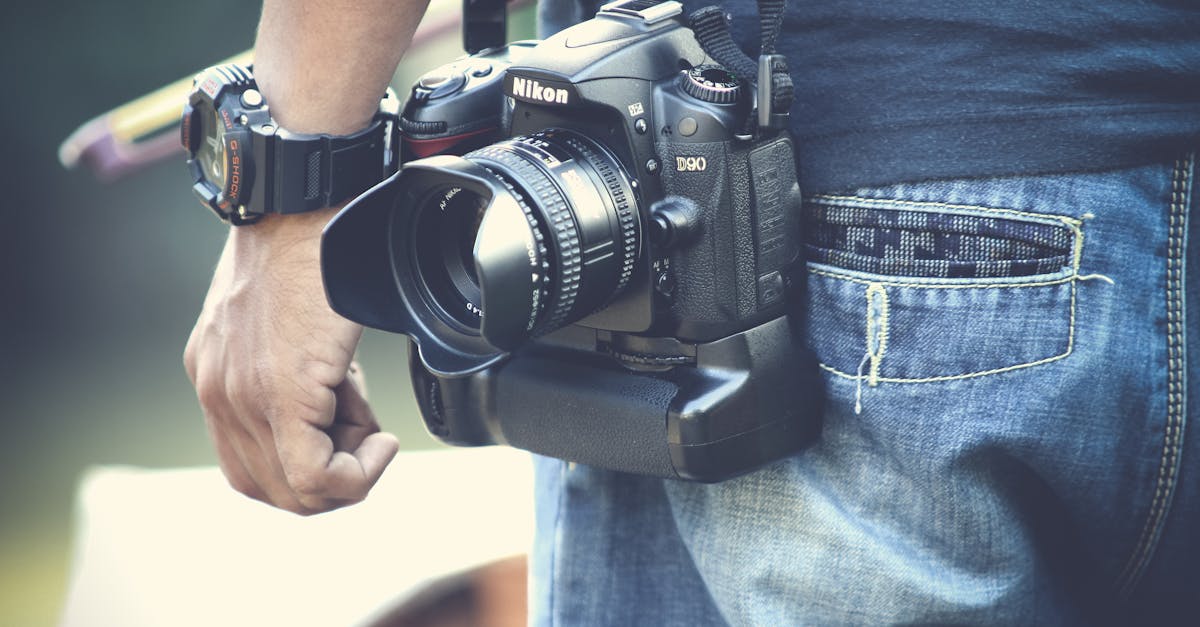How to Learn Photography with a DSLR Camera: Expert Tips and Tricks
In the world of professional photography, mastering the use of a DSLR camera is a pivotal step. How to learn photography with a DSLR camera is a question that resonates across various levels of photographers from novices to seasoned professionals seeking to refine their skills further.
While the basics of photography are crucial, understanding the intricate functionalities of a DSLR and leveraging them can make a significant difference in your work. This article aims to provide a comprehensive guide on how to learn photography with a DSLR camera, offering key insights and actionable tips for professional photographers.

Getting Started with DSLR Cameras
The first step to mastering photography with a DSLR camera is familiarizing yourself with the device itself. Here are some essential points to consider:
Understanding Your DSLR
A DSLR, or Digital Single-Lens Reflex camera, combines the optics and mechanisms of a single-lens reflex camera with a digital imaging sensor, offering both amateurs and professionals a significant edge over other camera types. Its important to understand the core components of your DSLR:
- Lens: This is the most critical part of your camera. Different lenses can provide varied results, so choosing the right one for your photography style is essential. For an in-depth explanation, check which DSLR camera to buy.
- Viewfinder: This small window allows you to see the exact image the lens is capturing.
- Sensor: The sensor size and quality greatly determine the image quality. DSLRs come with full-frame and crop sensors, each offering different benefits.
- Shutter: It controls the amount of light entering the camera. Understanding the shutter speed helps in managing exposure and capturing motion.

Mastering Basic Photography Techniques
Developing a solid foundation in photography techniques is essential. Here are some basics that professional photographers need to revisit continuously:
Exposure Triangle
The exposure triangle aperture, shutter speed, and ISO is fundamental in controlling lighting and image quality in photography. Heres a brief overview:
- Aperture: Affects the depth of field; a wider aperture results in a shallow depth of field, perfect for portrait photography.
- Shutter Speed: Determines the exposure time. Faster shutter speeds freeze action, while slower ones capture motion blur.
- ISO: Measures the sensors sensitivity to light. Lower ISO values mean less sensitivity, ideal for bright conditions; higher values are for low-light situations.
Composition Techniques
Excellent composition transforms a mundane photograph into a compelling story. Some essential techniques include:
- Rule of Thirds: Dividing the frame into a 3x3 grid and placing the subject at the intersection points creates balanced and engaging images.
- Leading Lines: Use natural lines in the environment to guide the viewers eyes towards the subject.
- Symmetry: Symmetrical compositions can be aesthetically pleasing and visually satisfying.

Delving Deeper: Advanced Photography Skills
Once youre comfortable with the basics, its time to delve deeper into more advanced techniques to enhance your photography.
Mastering Manual Mode
Switching to manual mode gives you complete control over the camera settings. To get the best out of this mode:
- Experiment with different DSLR settings in various lighting conditions.
- Regularly practice adjusting aperture, shutter speed, and ISO until it becomes intuitive.
- Understand how different combinations affect the final image.
Utilizing Post-Processing Software
Editing is where your photograph can reach its full potential. Software like Adobe Lightroom and Photoshop is industry standards. Heres how to make the most of them:
- Learn to adjust brightness, contrast, and saturation to bring out the best in your photos.
- Use advanced tools to correct lens distortions and improve image sharpness.
- Experiment with different filters and effects to create unique styles.
For more detailed guidance on utilizing Adobe tools, visit this site.

Investing in the Right Gear
As a professional photographer, investing in advanced tools and accessories can significantly impact your work. Here are some recommendations:
Lenses
Having a variety of lenses allows you to explore different styles and genres of photography:
- Prime Lenses: Known for their sharpness and wide apertures, ideal for portraits.
- Zoom Lenses: Versatile, allowing you to cover a range of focal lengths.
- Macro Lenses: Perfect for close-up shots and capturing intricate details.
Accessories
Apart from lenses, some crucial accessories include:
- Tripods: Essential for stability, especially in low-light conditions.
- External Flashes: Useful for controlling lighting in various environments.
- Filters: ND and polarizing filters can improve your shots dramatically by managing light and reflections.
For tips on checking your gear before purchase, visit here.
Continuous Learning and Adaptation
Photography is an ever-evolving field, and staying updated with the latest trends and technologies is vital. Heres how to keep your skills sharp:
Engage in Workshops and Courses
Participate in photography workshops. Learning from experts and peers can provide new insights and inspirations.
Join Photography Communities
Being a part of photography circles, both online and offline, allows you to share your work, receive feedback, and stay motivated. Some platforms to consider are:
FAQ
How long does it take to learn DSLR photography?
The learning curve for DSLR photography can vary. On average, it takes 6 months to a year to become proficient, with continuous practice and learning.
What are the best lenses for beginners?
For beginners, a 50mm prime lens is highly recommended due to its versatility and excellent performance in various conditions.
Can I learn DSLR photography online?
Yes, there are numerous online courses and tutorials available that offer comprehensive guides for learning DSLR photography.
As an Amazon Associate, I earn from qualifying purchases.

